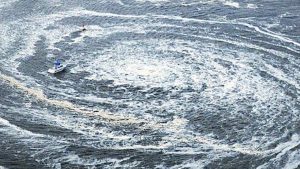Minutes Matter: Nature’s Warning Signs for Tsunami
Cindi Preller, NOAA’s National Weather Service Pacific Tsunami Warning Center in Honolulu, Hawai’i
May 22, 2020, marks the 60th year since the 1960 Great Chilean earthquake, the largest ever measured at magnitude 9.5, which wreaked havoc across the entire Pacific Basin. Earthquakes and tsunamis have been happening globally since our planet was born. One of the earliest recorded devastating tsunami disasters happened in the Atlantic basin, in 1755, near Lisbon, Portugal. Tsunamis have no season and cannot be predicted. Nature, however, does provide us with clues. It is critical that children learn these life-saving facts since they are the best teachers and will pass these tools onto others. This presentation will provide students with tsunami, earthquake, and volcano education through a variety of games and activities. (Grades 2-6 but all ages will enjoy)
Resources to access at home:
» Tsunami Hazard Maps: States and territories produce maps for their coastlines that identify tsunami inundation and evacuation areas.
» Tsunami Education and Outreach Material: Resources available about tsunami safety, including a 2-minute fast draw animation.
» Pacific Tsunami Warning Center Video Playlist: Collection of videos and animations from the Pacific Tsunami Warning Center
» Tsunami FAQs
» Homeowners Handbook to Prepare for Natural Hazards
» National Ocean Service animation – Know what to do if a tsunami hits—and the risks you face. (~2 minutes long) Shown during the webinar.
» UN video, “Lessons save lives: the story of Tilly Smith”. A clip of this is shown during her webinar.
» University of Alaska Earthquake Center animations. Generation of a tsunami, propagation, etc. (These are used in the webinar)
» NOAA Ocean Today Tsunami Survival Guide Videos: There are 7 short videos- Tsunami awareness, tracking tsunamis, tsunami science, and more.

